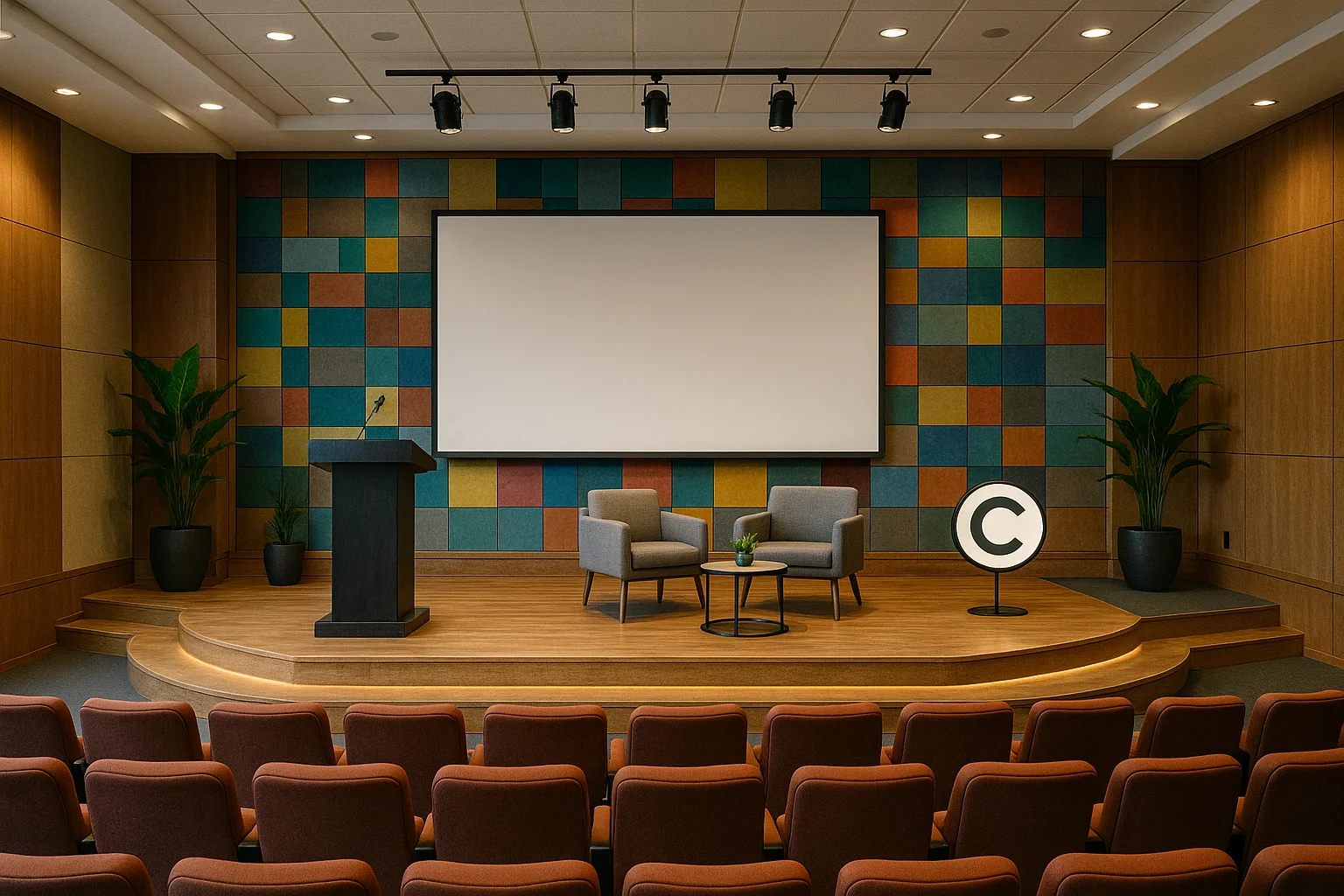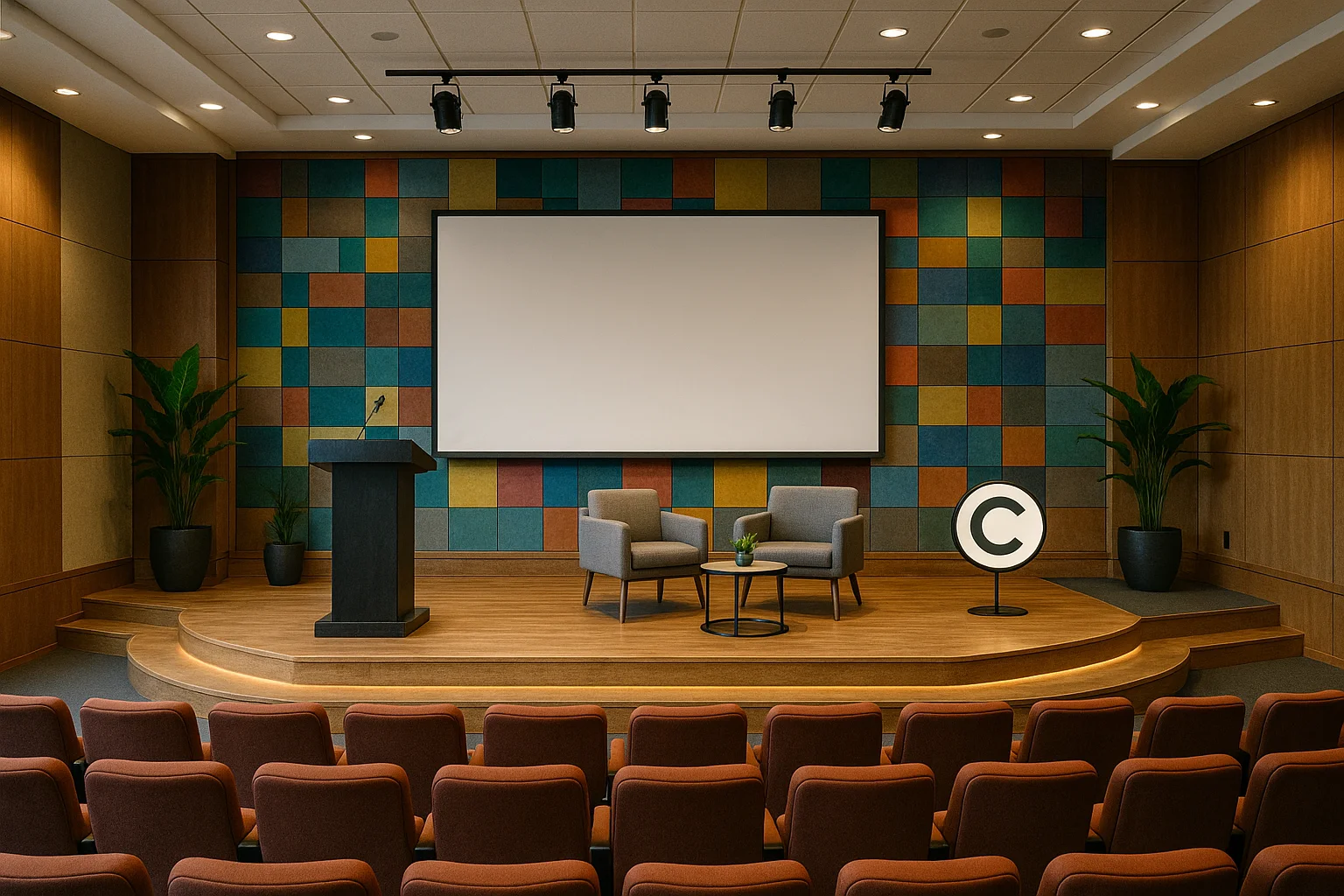2025-07-18 00:00:00


A well-executed stage design can transform any corporate event. It adds visual coherence, reinforces key messages, and creates an immersive environment that enhances the attendee experience. At CREA Group Events, we view it as a strategic tool to maximize impact and ensure every event is truly memorable.
Stage designs for events go beyond decoration. They involve the creation of a space that guides, reinforces, and enhances communication and branding objectives. Whether it’s an awards ceremony or a corporate presentation, the stage becomes the visual anchor that captures the audience’s attention.
In the organization of corporate events, where the attendee experience is critical, stage design plays a strategic role. It involves planning movement flows, lighting, audiovisual integration, and atmosphere—all aligned with the brand's identity and the core message being delivered.
Professional stage design must meet both aesthetic and functional criteria. These are the essential components of a good event production for events service:
Custom scenography: Visual structures tailored to the concept and branding of the event.
Stage lighting: Used to create moods, rhythms, and focal points that guide audience attention.
LED screens and audiovisual solutions: Display dynamic content, presentations, or thematic backdrops.
Corporate furniture: Lecterns, chairs, tables, and decor aligned with the visual identity.
Surround sound systems: Ensure clear and professional-quality audio throughout the venue.
Hidden technical elements: Cables, structures, and reinforcements integrated without disrupting aesthetics.
Venue selection: Choosing a unique venue and fitting location is key to enhancing the overall impact of the stage design.
Each of these elements is selected and positioned strategically to ensure that the stage not only looks impressive but also enhances the core messages of the event.
A well-designed stage doesn't just impress visually—it drives real results. Whether it’s an annual convention, results presentation, or team meeting, visual impact helps anchor concepts and reinforce memory.
In the Spain MICE industry, where differentiation and quality are vital, stage designs for corporate events become powerful tools to convey brand values, emotions, and strategic goals. Every detail counts, and professional stage design ensures maximum message retention.
Incorporating brand colors, logos, and messaging into the stage creates a consistent and professional image. This visual reinforcement strengthens brand positioning and increases post-event recall among attendees.
The layout of the stage, combined with audiovisual tools, helps prioritize information. It allows the audience to better retain central ideas from presentations or speeches, improving the communication ROI.
Stage design directly shapes how the event is perceived. A thoughtfully designed space creates excitement, encourages participation, and fosters a welcoming atmosphere for networking.
The events sector in Spain is evolving quickly, and current trends blend sustainability, technology, and personalization. Attendees increasingly expect unique, immersive experiences aligned with contemporary values like efficiency and environmental responsibility.
Staying updated with these innovations is key. That’s why it’s essential to work with stage designers skilled in the latest technical solutions, sustainable materials, and adaptive formats, especially in top destinations like Barcelona, Madrid, or Malaga.
Future scenography favors reusable modular structures, low-energy technologies, and recycled materials. Ambient lighting and 3D sound help create immersive experiences without large-scale installations.
Stage and technology are fully connected—from interactive screens to projection mapping and augmented reality. All aimed at improving message clarity and delivering impactful moments.
Working with professional stage designers guarantees more than just aesthetics—it ensures functionality, safety, and communication effectiveness. For high-level events like international conventions, every second matters, and everything must be planned and coordinated to perfection.
When planning how to design a stage for an event, aligning with technical goals is essential. Expert collaboration from the initial briefing helps anticipate needs, optimize the layout, and adjust technical resources to the target audience and event format.
Local stage designers bring significant operational and creative advantages. They understand regional regulations, venue capabilities, and have direct access to suppliers of materials, structures, lighting, and installation services—saving time and costs while ensuring seamless integration.
Partnering with a DMC in Spain ( Destination Management Company) further streamlines the process. These agencies act as the bridge between clients and trusted local providers. They oversee the entire stage production—from design to setup, technical rehearsals, and dismantling—ensuring a smooth, professional execution.
Scenography refers to the decorative aspect, while stage design includes lighting, structure, audience flow, and integrated technology. Both must align for a cohesive experience.
It depends on the event size, duration, audiovisual requirements, and attendee numbers. Budgets can be optimized with modular design and local suppliers.
Yes. Effective stage designs don't require large expenses. With smart use of reusable materials and scalable technology, memorable results can be achieved on various budgets.
